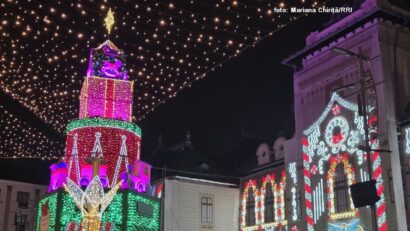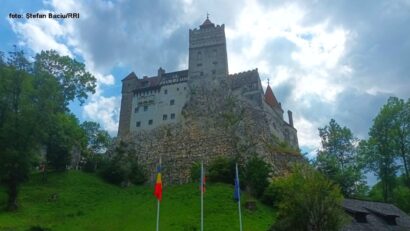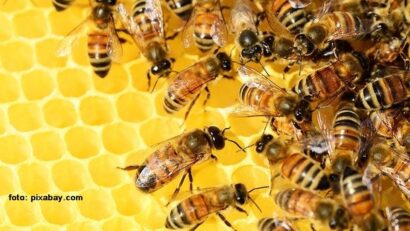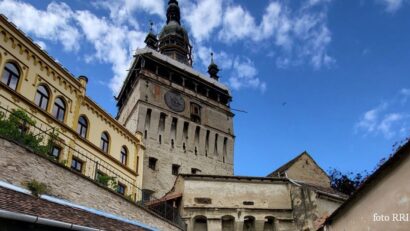Timisoara
Today we’re heading west to visit Romania’s third largest city, Timisoara. It is a miniature Europe, if you will, where Romanians, Germans, Serbs, Hungarians, Croats, Slovaks and Bulgarians are living together. Diversity, culture and history are the traits that have turned Timisoara into an ideal destination for those who are into cultural tourism. History is impressive and every step of the way. As you’re strolling through the city, you’re sure to run into traces of past times. Or at least that’s what the coordinator of Timisoara City Hall’s Tourism Information and Promotion Center, Lucia Solomon, told us.
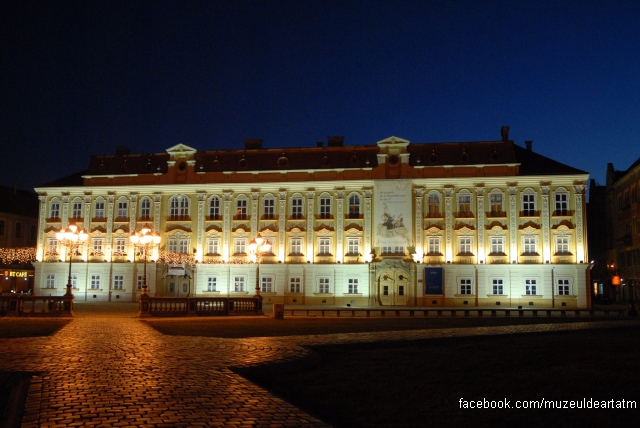
Daniel Onea, 02.05.2019, 13:30
Today we’re heading west to visit Romania’s third largest city, Timisoara. It is a miniature Europe, if you will, where Romanians, Germans, Serbs, Hungarians, Croats, Slovaks and Bulgarians are living together. Diversity, culture and history are the traits that have turned Timisoara into an ideal destination for those who are into cultural tourism. History is impressive and every step of the way. As you’re strolling through the city, you’re sure to run into traces of past times. Or at least that’s what the coordinator of Timisoara City Hall’s Tourism Information and Promotion Center, Lucia Solomon, told us.
Lucia Solomon: “Timisoara’s ancient archeological evidence is more than 7,000 years old, but what a tourist can see today dates from the 16th and 17th centuries, when Timisoara was under Ottoman occupation. You can also find in Timisoara the foundation of a mosque and the trestle of a minaret, which is evidence of those times. However, Timisoara’s transformation into a modern city occurred in the 18th century. It was then that modern Timisoara took shape. The time when it was conquered by the Habsburgs, after 1716, meant the advent of a new stage in its development. The old fortress dating from the Ottoman times was brought down and a new fortress emerged, known as the largest bastion-type fortification to have been preserved on Romania’s present-day territory. It is a Vauban-type fortress, quite similar to the one in Alba-Iulia, which sheltered the city’s administration between its walls. Of that time, only the Teresia bastion has been preserved, along with the city’s old city center, which is impressive. During the Baroque period many Baroque edifices were built, culminating with the Catholic Dome, the Serbian Church and the Baroque Palace. How many of the cities of today boast a baroque palace at the heart of the city? The palace can be visited by any tourist. The Art Museum is also located on the premises.”
After the Baroque age, Timisoara was incorporated into the Hungarian Kingdom, as part of the Austro-Hungarian monarchy, Lucia Solomon told us: “The city’s main functions were predominantly economic. Timisoara’s progress back then was significant. From that time date a great many of the city’s premieres. The first horse-drawn streetcar was operational in Timisoara in 1869 and it was Europe’s first city with electric lighting, in 1884. At that time, many of the city’s parks were built, which have remained iconic for the city to this day, Timisoara also being known as the City of Flowers. Today we boast the Park of the Roses, the Park of Justice, which is full of tulips these days. We are also proud of the city center, which always has a green carpet in Victory Square, with beautiful flower arrangements, to be found there in any season.”
Timisoara boasts Romania’s largest number of historical buildings. Of the total number of the buildings across the city, over 14,000 have been listed as historical monuments.
With details on that, here is the coordinator of the Timisoara City Hall’s Tourism Information and Promotion Center, Lucia Solomon: ”Timisoara’s most relevant trait is the wide range of Art Nouveau buildings, erected in the late 19th and early into the 20th century. These are beautiful palaces, lining the Victory Square. Any tourist is impressed by the city’s architecture. The palaces can be found also in the historical neighborhoods. Timisoara has many common points with Budapest and Vienna. Albeit on a smaller scale, this architectural style can be detected there, which can be found all around Europe. And that’s what tourists find most impressive.”
Timisoara is the only place in Romania where the habit of giving concerts in caves has by now become a tradition, which is free of charge for the public. Every year, shuttle coaches arrive, packed with tourists from Israel, the USA, Canada, Hungary and Austria. And the fact that the concert venue is not necessarily the concert hall proper is something very familiar to anyone who paid a visit to Timisoara. However, there are multiple possibilities.
Lucia Solomon is back at the microphone: “Tourists can have lots of moments to remember on the streets of the city center, where lots of beer gardens have been placed. In the cellars of the old buildings, bars, restaurants and clubs have been set up. Visitors can spend fine moments in parks or on the alleys along the Bega river banks, arranged for walks but also for cycling. You can have a boat ride on the Bega river, with a boat crossing the entire city as a means of public transport. It’s quite a pleasure to be able to cross all the districts in one of those boats. You can also have a trip with the tourist streetcar on Sundays, visit many museums and go to stage performances and festivals.”
For those who can spend a little more time in the area, the Timisoara City Hall’s Tourism Information and Promotion Center can recommend trips in the nearby areas. Here is Lucia Solomon again: ”From Timisoara, tourists can travel to other destinations around the city, such as Recaș or Buziaș, where they can taste Banat wine sorts. Herneacova is also a place worth travelling to, it is a leisure area nearby Timisoara, close to Recaș, or can go to Surduc Lake, where they can spend some leisure moments. Of course, tourists can also travel to Arad or even farther, to Oradea, Baile Herculane or Banat Mountains. Many tourists also opt for visiting the Corvins’ Castle in Hunedoara. They heard about the castle and have been asking us how they can get there. We’re expecting tourists to visit Timisoara and see its best, thanks to the city’s culture, its parks, thanks to Bega river or the numerous architectural styles which give character and charm to the city. We’re waiting for them wholeheartedly and hope they will have a great time here.”
In less than two years, in 2021, Timisoara will take center stage in Europe as the continent’s new Capital of Culture, under the slogan “Shine your lightlight up your city!”

